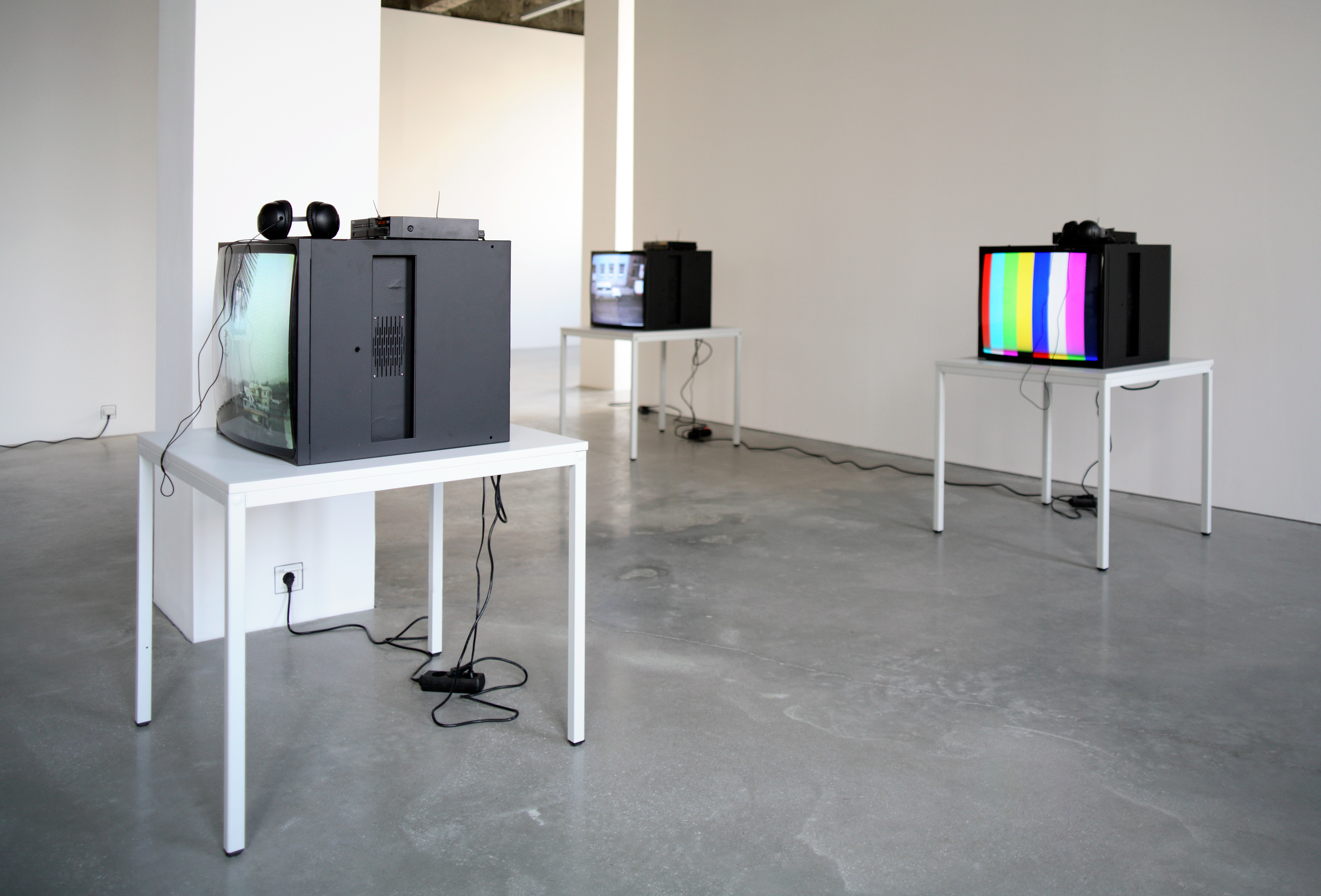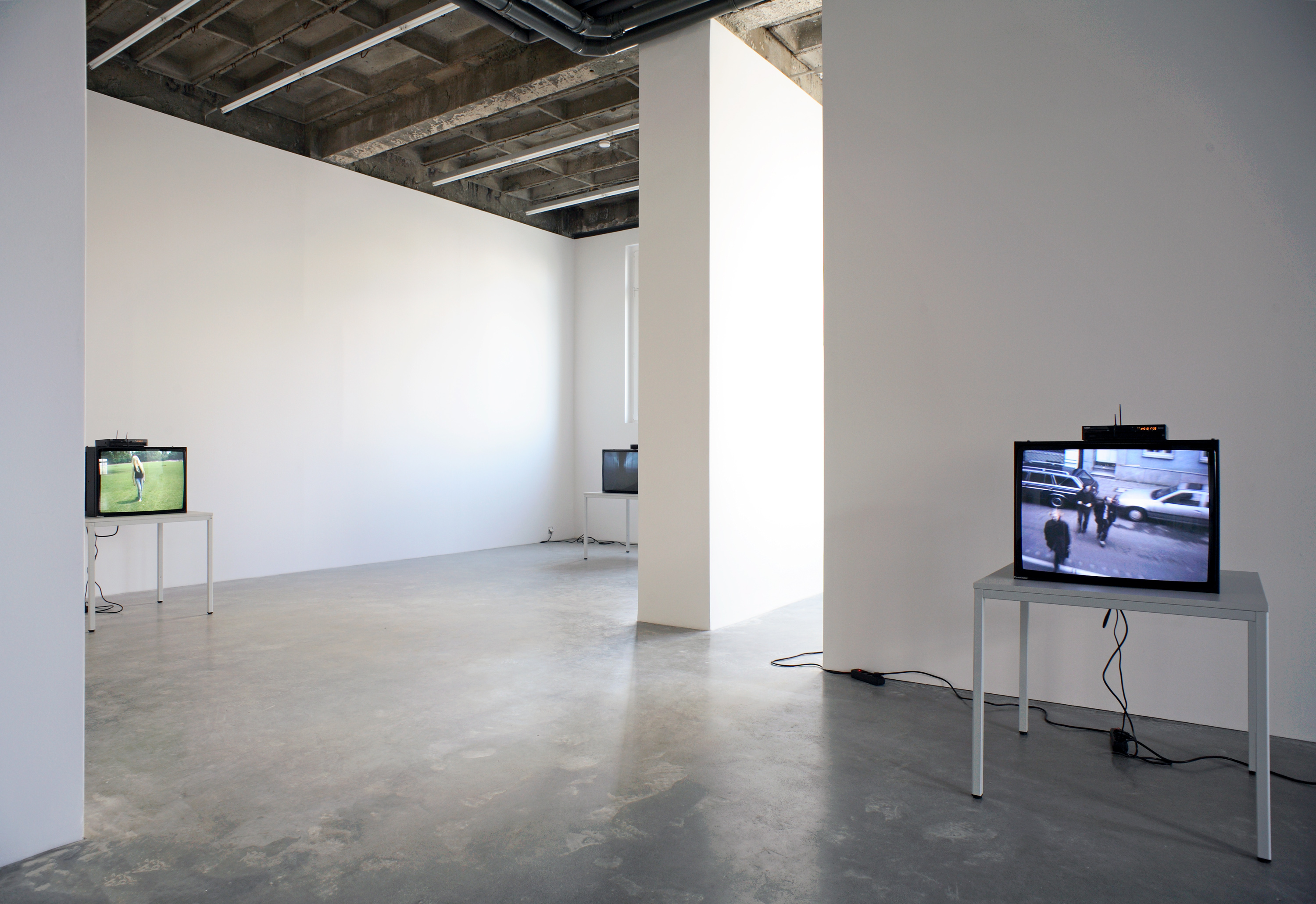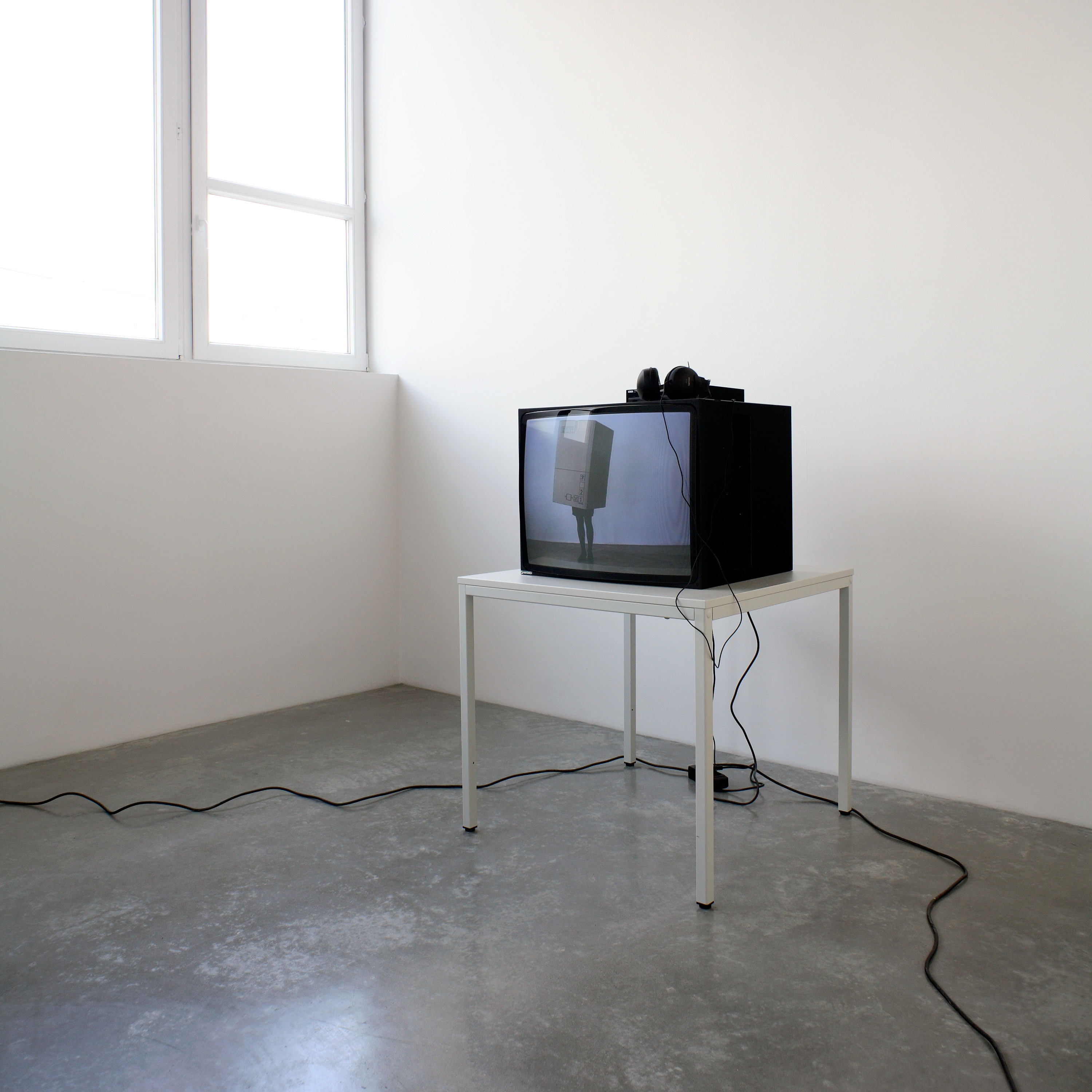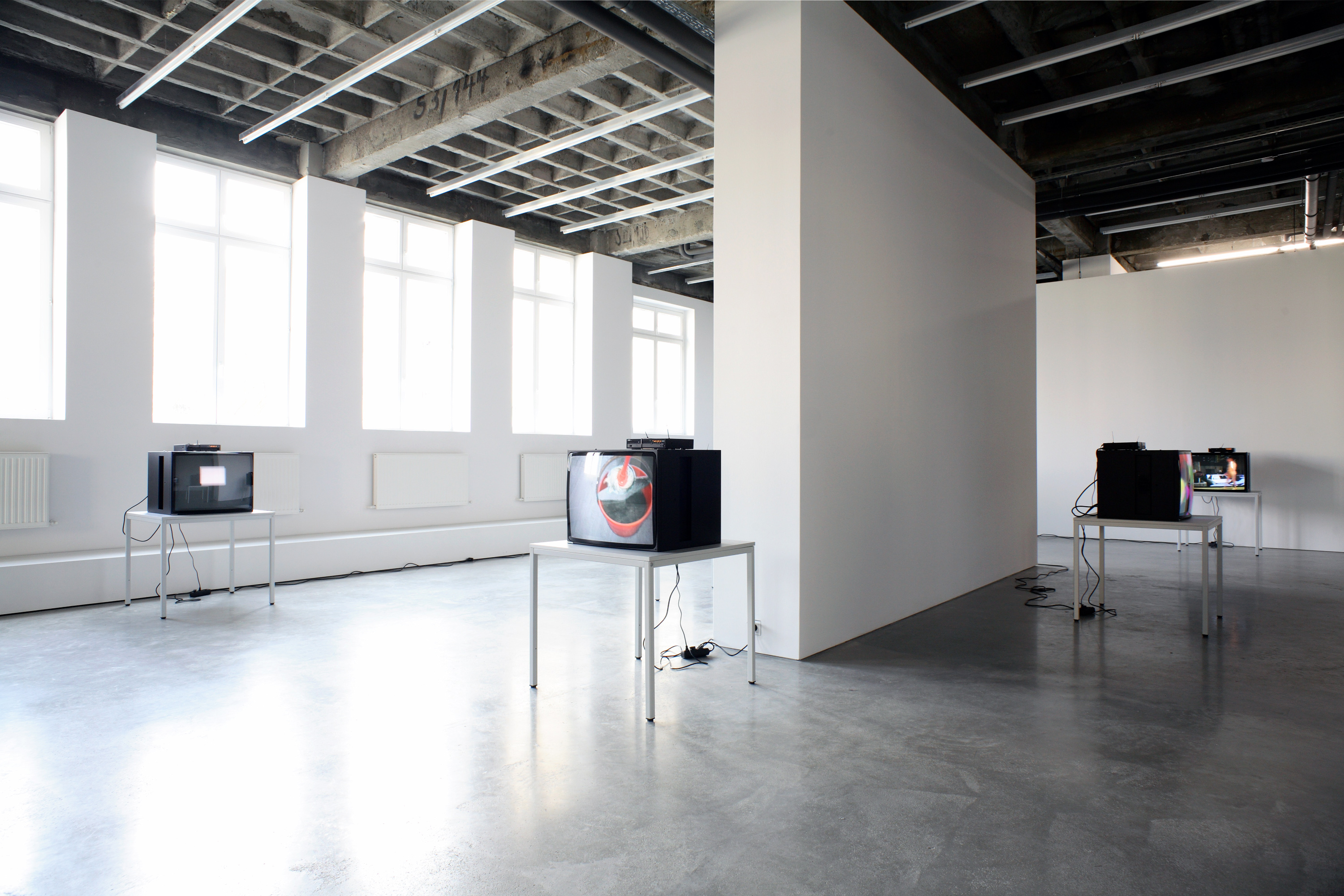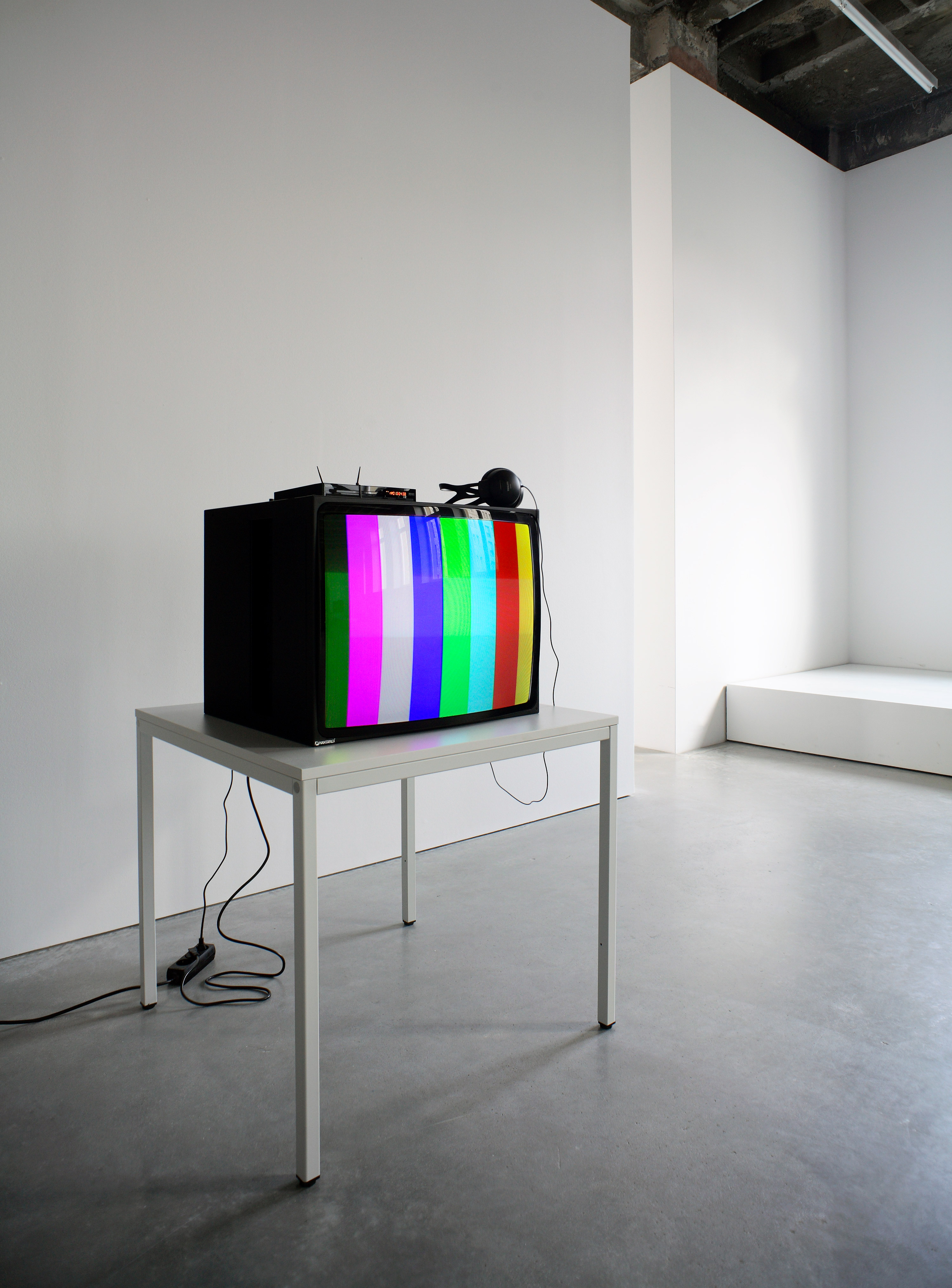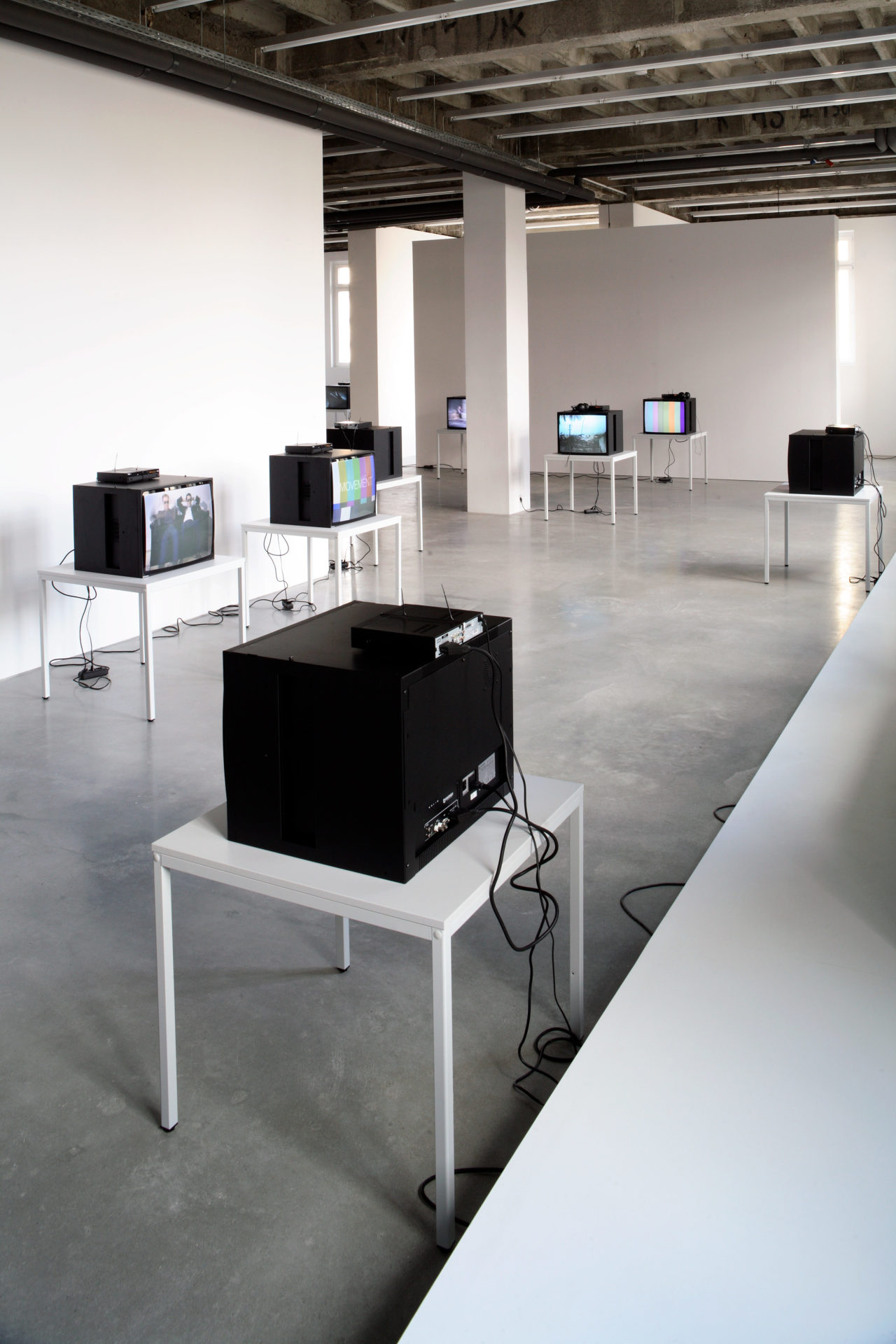The work of Heimo Zobernig, for whom “art is a quest using various media,” is difficult to sum up in a word. The interests of the Austrian artist born in 1958 are too diverse. Zobernig’s sculptures and pictures are often related to de Stijl, Neogeo, and American minimal art, whose simple cubes, blocks and pillars are echoed in his work. In addition to canvas, on which he declines his own color theories, his preferred materials have long included cardboard, plywood, and polystyrene foam. Central recurring themes include space, color, text, and modern art as an artistic approach to a rational, intellectual pragmatism.
With seventeen videos selected by the artist, haubrokshows presents for the first time in Berlin a comprehensive retrospective of Heimo Zobernig’s video work. Many of these videos seem irritating, appear uncertain or clumsy, provoke us with emptiness, and border on the absurd. They are kept intentionally simple, using fixed camera recordings and minimalist dramaturgy and are thus in line with the strategies of reduction apparent in his pictures and sculptures. On the other hand, the shameless poses of the artist as actor clothed in bizarre outfits derive from the ambiguous structure of embarrassments of a performative practice. The crudeness of the chromakeying, a technique commonplace in film and television, reveals itself as an estrangement tactic. At the same time, the plots are as rudimentary as the costumes. Despite the dilettantism that is flaunted on all levels, the black monitors – important for the essentially sculptural character of many of his videos – should not be misinterpreted as zones of ironic distancing. Instead, Zobernig uses objectification again in his films as a means of examining the influences of the media within the art industry.
In his earlier videos Nr. 1, Nr. 2, and Nr. 3, in which a wonderfully burlesque Zobernig dons a frivolous longhaired wig, he suggests a structural attack on the notion of art itself, especially on its mystical symbols and often transcendental intentions. each only six minutes in length, the films can be understood in their unmistakably physical exhibitionism of the artist-subject as paraphrases of creative self-affirmation through extremely introverted or, controversially, extroverted physicality – a tactic often seen among the pioneers of video art, such as Bruce Naumann. The role of the artist as a clown – an ineradicable cliché in existence since the nineteenth century – is established in these films and was cultivated over the years by Zobernig. In the following video Nr. 4 he even introduces a mirror image that mimics the grimaces and antics of the original with only slight delay. This lag effect is characteristic of early television and long-distance radio transmissions and was used in video art as closed-circuit situations such as in Dan Graham’s Body press (1970) and Two rooms/reverse video delay (1974). Zobernig’s skeptical view of the allegorical dimension of these earlier video works with their lofty symbolism is obvious in his video Nr. 12 that he produced in 1996 for an exhibition at the Renaissance Society in Chicago. The video depicts the artist naked in a hallway, whose walls are projected with panoramic sweeps of the city. He seems undisturbed by their wild changes in perspective as he nonchalantly practices gymnastic moves. The very imperfect use of blue box technology makes his own contours blur to the point of obscurity. In this video, Zobernig again pits dilettantism against the dominant tendencies – here, in the 1990’s it is the increasingly overwhelming visual strategies in film and video art – which he plays upon in the projections but ultimately avoids. He makes ample use of possibilities opened up through his intentional dilettantism. His longtime employment of such anachronistic methods in the field of visual manipulation has continued to distance him from the growing tendency towards technically sophisticated video installations.
Zobernig increases this distance over the course of time with pleasure. His insistence on simplicity is not for the sake of sophistry, but because he can precisely expose the conditions of artistic creation – his own included. His video works can thus be considered to be on par with his other artistic work, in which since the 1980’s he has scrutinized conventions of the visual modes of artistic expression.
Susanne Prinz
The exhibition was repeated for the presentation of the catalog Heimo Zobernig: Video.
Installation view
Installation view
Installation view
List of works
Heimo Zobernig
Le désir de la beauté, 2006
Heimo Zobernig
Nun das…, 2006
Heimo Zobernig
Stage management, 2004
Heimo Zobernig
Nr. 21, 2003
Heimo Zobernig
Video / Kino, 1999
Heimo Zobernig
Nr. 17, 1998
Heimo Zobernig
Nr. 12, 1996
Heimo Zobernig
Nr. 14, 1996
Heimo Zobernig
Nr. 9, 1995
Heimo Zobernig
Nr. 10, 1995
Heimo Zobernig
Nr. 11, 1995
Heimo Zobernig
38, 1992
Heimo Zobernig
Avoidance im Studio, 1992
Heimo Zobernig
Videoedition für Texte zur Kunst, 1991
Heimo Zobernig
Nr. 2, 1989
Heimo Zobernig
Nr. 4, 1989
Heimo Zobernig
1 de nada, 1981
